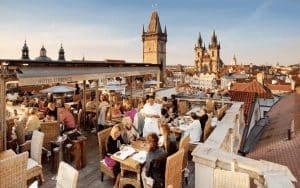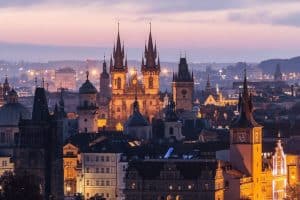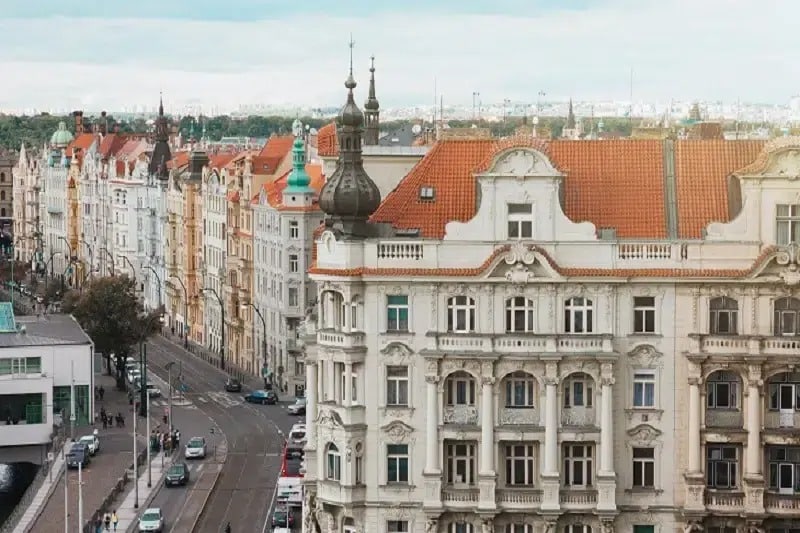
Thunovská Street
Thunovská Street connects the western part of the area of the Church of the Virgin Mary with Tomášská street on the east side. Connected to it are also the castle stairs leading to Hradčasnké Square. It measures about 350 meters. The current name of the street, which has been officially in use since 1870, was derived from Thunovský Palace, No. 180/14, which is currently used by the British Embassy. Thunovská Street is one of the most impressive places of old Prague since its medieval character was preserved. It is arched with three arches in three different places and it used for vehicular traffic only partially. It is mostly used by tourists as an access way to Prague Castle.
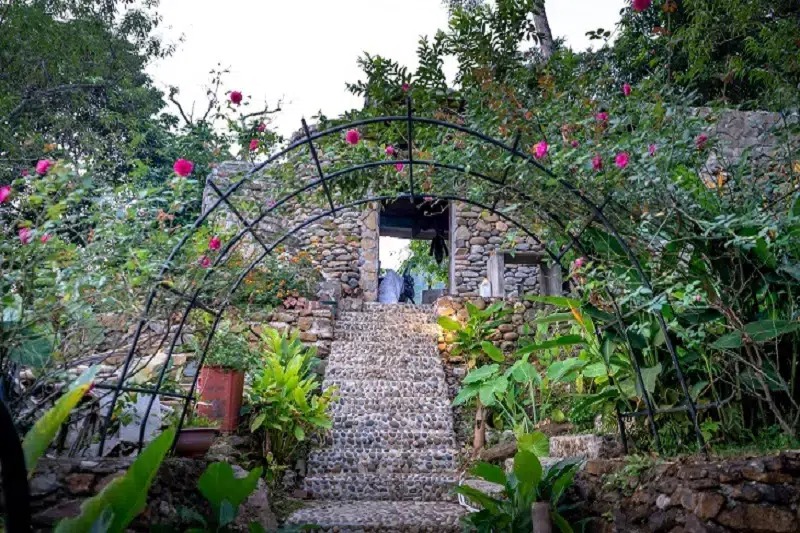
Vojan Gardens
The garden is considered the oldest partially preserved garden in Prague. Its melancholy seems to have survived from the Middle Ages, when it was founded as a monastery garden. Here you can find peace from the bustle of the city, near a small lake in the shade of trees to rest on a bench and admire the stalactites decorate the chapel of St. Elijah with wall paintings and sundial from the 17th century. A wide staircase at the end of the garden leads to the observation terrace with benches and rose pergolas.
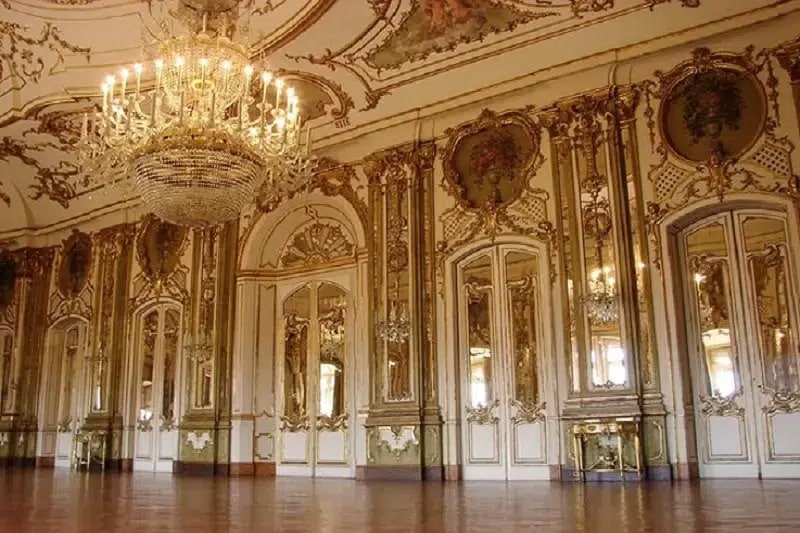
The Colloredo-Mansfeld Palace
The Colloredo-Mansfeld Palace is one of the prime examples of Prague palace architecture with rich architectural development combining elements of High Baroque and later Rococo and Second Rococo modifications. The Baroque building located in one of the most exposed places of old Prague near Charles Bridge was built on the foundations of Romanesque and Gothic buildings and Renaissance buildings.
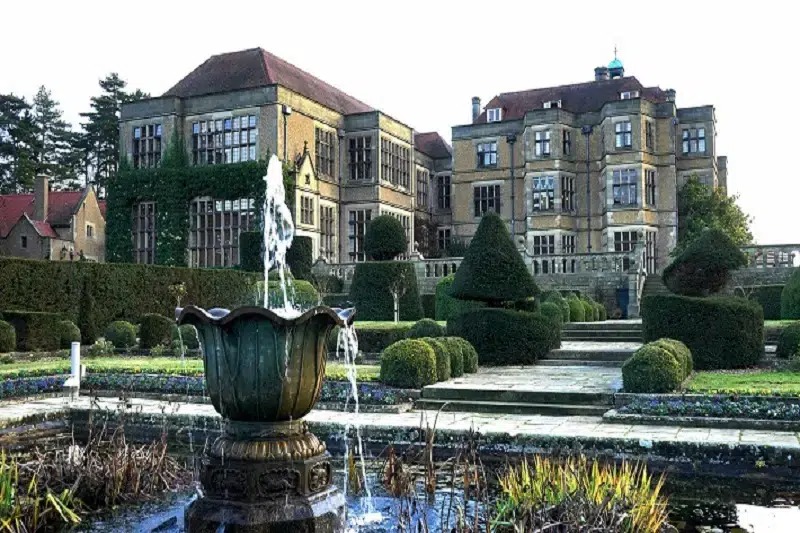
Wallenstein Garden
Wallenstein Garden (Valdstejnska zahrada) is probably the first palace garden in Prague. It belongs to the Wallenstein Palace, nowadays the seat of the Senate of the Czech Republic. The garden was built together with the palace in 1623 – 30 in early Baroque style. Now you can find it as a lovely and pieceful place in the centre of Prague. Situated in the east you can see Sala terrena with three arcades. The walls of Sala terrena are decorated by frescoes and stuccoes representing Trojan wars by Baccio di Bianco. The character of the decorations is similar to the decorations in the palace. There are many concerts and theatre performances organized in Sala terrena nowadays.
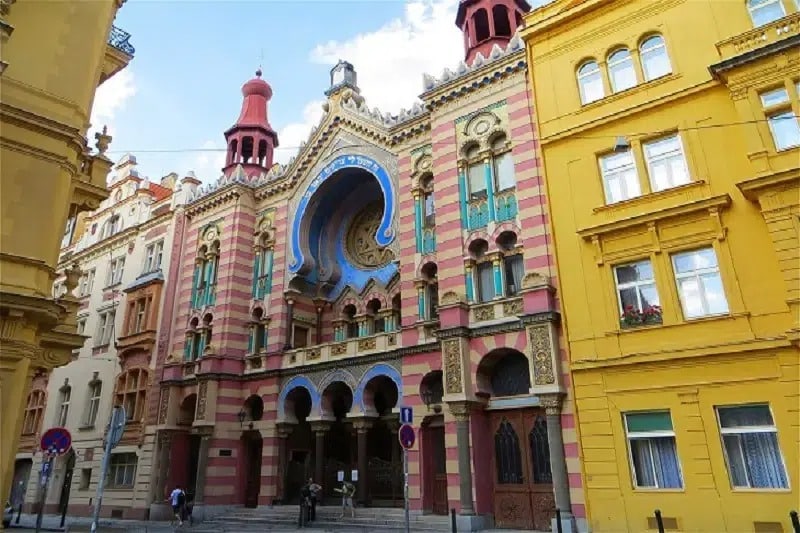
Jerusalem (Jubilee) Synagogue
Jubilee (better known as Jerusalem) Synagogue is the youngest and largest synagogue in Prague. It was built in 1906 in ornamental Moorish and Art Nouveau style.
The dominant feature on the front of the building is a monumental arch covering rosette window with the David´s star. The Hebrew inscriptions above the entrance say: “This is the Lord\’s gate. The righteous shall enter through it. and Have we not all one father? Hath not one God created us? Inside we can admire a breathtaking interior, richly decorated and painted in deep colours, with wrought chandeliers and beautiful organ. Nowadays, worships in Orthodox rite are carried out in Jerusalem Synagogue, and regular organ concerts and classical concerts are held here.
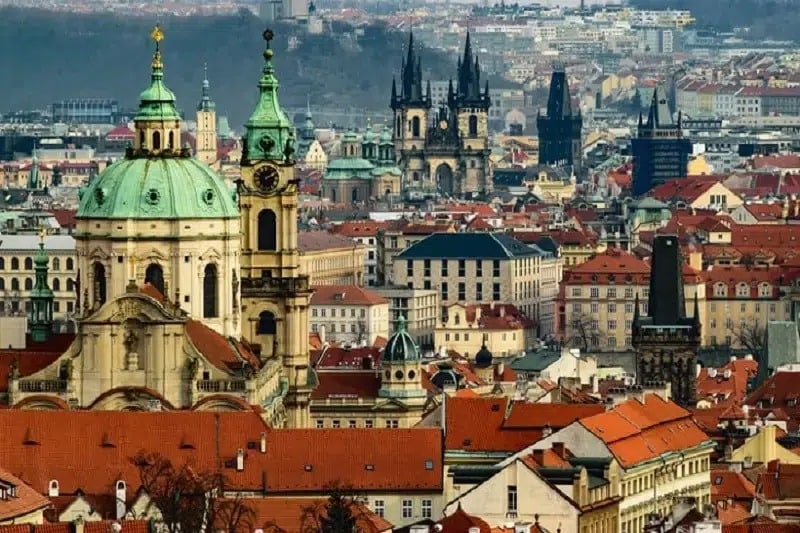
Loreto (Loreta)
This Marian pilgrimage site with the Baroque Church of the Nativity and a replica of the Holy House is surrounded by cloisters and chapels. In the tower there is a 27-bell carillon that plays the Loretan Marian song A Thousand Times We Greet Thee (every hour from 9 am to 6 pm). The Loreto treasure consists of a rare collection of liturgical objects from the 16th to 18th centuries, the most famous of which is the Prague Sun, a monstrance encrusted with 6,222 diamonds.

